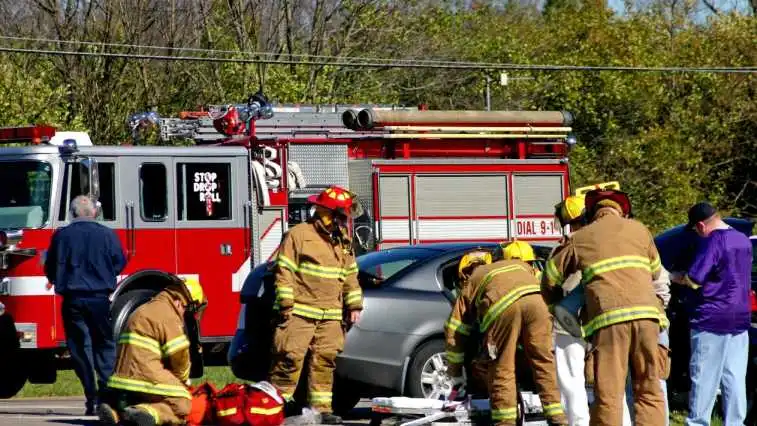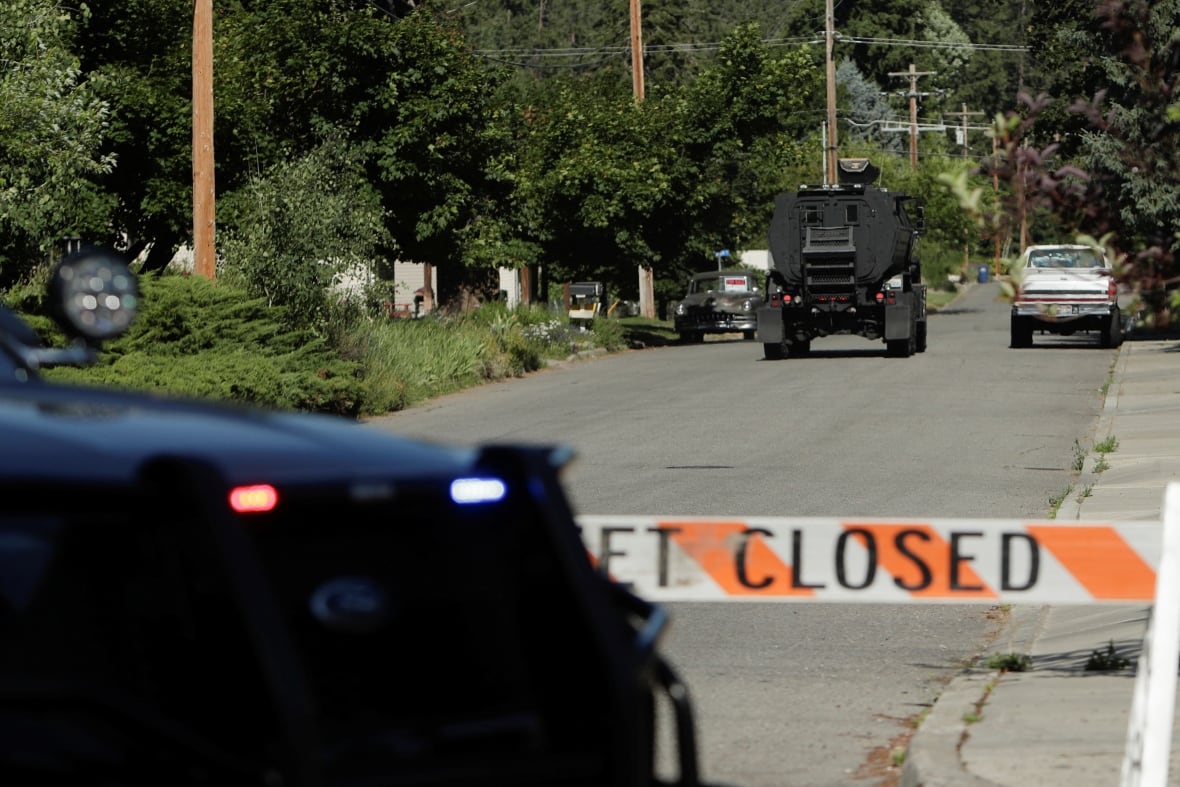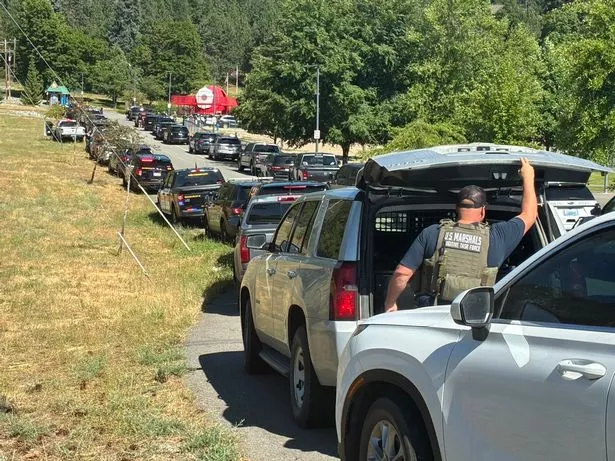
Idaho Firefighters Ambushed: Two Killed in Deadly Sniper Attack Near Coeur d’Alene
As new facts of the Sunday sniper shooting come to light, police believe a gunman lured firefighters to a fire in Idaho. Two firefighters were killed in the ambush, according to Kootenai County, Idaho, sheriff Robert Norris, while another was gravely hurt and is currently battling for his life.
Around 2:00 p.m. on Sunday, when firemen arrived on the scene to combat a brush fire that had been reported to authorities 40 minutes earlier, the gunman opened fire at the well-known tourist destination Canfield Mountain in North Idaho. During a press conference on Sunday evening, Norris declared, This was a complete ambush. There was no chance for these firefighters.
When the sniper began fire, a firefighter frantically called emergency services, according to shocking audio. In a dispatch audio recording that CNN aired, a firefighter said, It's obvious to me that this fire was purposefully set up to draw us in.
What Happened to Idaho Firefighters Shot?

Police cannot confirm whether the shooter committed suicide; a body examination is scheduled for Monday. The Coeur D'Alene Fire Department employed one of the killed firefighters, while Kootenai County Fire & Rescue employed the other.
Their identities have not yet been disclosed by the police. According to Norris, the wounded Coeur d'Alene firefighter is fighting for his life, although his condition is stable at the moment.
Related Article: How Does Dominican Republic News Impact Local Communities?
According to police, the purposefully started fire has spread to about 20 acres, and authorities are working to contain it now that the sniper threat has passed. They claimed that the dense tree cover in the region made it difficult to find the culprit, even with the use of drones and aircraft.
On Sunday, June 29, 2025, at approximately 1:21 p.m. local time, emergency services received a 911 call reporting a brush fire near the popular recreation area of Canfield Mountain, just north of Coeur d’Alene, Idaho.
Responding swiftly, multiple fire crews hailing from Coeur d’Alene Fire Department, Kootenai County Fire and Rescue, and others—rushed into the forested hills brimming with hiking and biking trails.
Within 40 minutes, however, what they thought was a routine wildland fire response turned into a nightmare: at around 2:00 p.m., the first shots rang out.
A Heinous Ambush
Sheriff Bob Norris of Kootenai County later described the incident as a “total ambush,” where a sniper, concealed in the dense brush and groves, targeted firefighters attempting to extinguish the blaze.
Timing of the assault: The gunfire began approximately half an hour after the firefighters arrived.
Weapons used: Investigators later determined the shooter used a high-power modern sporting rifle, which allowed him to fire from a concealed position deep within the forested terrain.
Premeditation: Authorities strongly believe the fire was intentionally set to lure firefighters into an ambush.
Within minutes, the attack escalated into a chaotic back-and-forth between firefighters and the unidentified assailant – who remained hidden, picking off responders from concealed positions.
Casualties and Heroism
When emergency crews reinforcements arrived, the scene was tragic:
- Two firefighters—a member from Coeur d’Alene Fire and another from Kootenai County Fire and Rescue—were killed at the scene
- A third firefighter from Coeur d’Alene was seriously wounded and underwent emergency surgery. He was stabilized and is now fighting for his life .
- None of the deceased or injured have been publicly identified yet .
- Their sacrifice has struck a chord through the firefighting community, as local, state, and national organizations mourn the victims of such a brutal and calculated act.
Tactical Response & Investigation

Local law enforcement, including the Kootenai County Sheriff's Office, was joined by FBI tactical teams, ATF fire investigators, and other agencies.
Key developments in the subsequent hours included:
1: Shelter-in-place orders: Authorities asked all hikers and civilians to avoid the area around Canfield Mountain Trailhead and Nettleton Gulch Road, situated about 4 miles north of Coeur d’Alene.
You Must Also Like: Did Trump Cause the Ceasefire in Gaza?
2: Drop in activity: The fire continued to spread—covering roughly 20 acres—but suppressing it remained secondary to ensuring public safety .
3: Finding the suspect: Around 3:15 p.m., officers triangulated a persistent cell phone signal to a secluded mountain location. There, a deceased male suspect was found with a firearm nearby; authorities believe him to be the lone shooter.
4: Body retrieval: Fire rapidly closed in on the suspect’s position, prompting the sheriff's team to "scoop up" the body before it could be destroyed by flames.
5: Motive remains elusive: Officials confirmed the shooter also started the blaze, but no motives—whether targeted resentment, revenge, or ideological have been identified.
6: Scene search continues: Following the dramatic standoff, investigators remained on-site overnight to search for additional weapons or explosive devices that may have been part of a broader plot.
Community and Political Response
The attack reverberated far beyond northern Idaho:
Governor Brad Little issued statements condemning the incident as a "heinous direct assault" on brave first responders, urging prayers and solidarity from all Idahoans.
The International Association of Fire Fighters (IAFF) expressed shock and grief, calling on the country to unite in support of the fallen
A solemn procession carried the slain firefighters from Kootenai Health to the Spokane medical examiner’s office, where local residents honored the convoy as it passed through.
Broader Implications
This ambush marks a rare but deeply disturbing escalation—first responders are usually celebrated as protectors, not targets.
Key considerations emerging now include:
Firefighter safety protocols: Wildland firefighters are not trained to operate in active shooter scenarios. Hopefully this tragedy forces revisions in training, coordination, and risk assessment during emergency responses.
Rapid communication: Effective dispatch systems and real-time updates from field personnel were critical in managing additional risks once the gunfire began.
Use of cell‑phone tracking & drones: Leveraging technology, law enforcement pinpointed the suspect quickly—a method that proved decisive in neutralizing the threat.
Arson as a weapon: Using fire to lure firefighters transforms a battlefield; this tactic echoes past ambushes (such as the 2012 Webster, South Dakota case), and authorities now describe it as premeditated arson with intent to kill.
Conclusion
What began as a call to extinguish a wildfire ended in an unthinkable attack on men and women who run toward danger. Two firefighters lost their lives, another fights for his, and an entire community stands in shock.
This is not just a tragedy—it’s a stark reminder of the evolving risks that first responders face. Moving forward, their safety will hinge not only on courage and gear, but on policy, preparation, and our collective resolve to prevent such heinous acts again.








